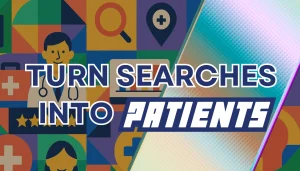Make Your Homepage a Guide to Care
Do you want more patients to choose your clinic instead of booking elsewhere? Then focus on homepage design for clinics—the first and most important page most visitors will see. Think of it as your online front door. If it’s built to showcase what you want to say instead of what patients need to find, you’re losing their attention and possibly their trust. A patient-centered homepage doesn’t just look professional—it speaks directly to the visitor’s needs and makes it easy for them to take action.
Start Homepage Design for Clinics with the Patient’s Problem
Every visitor arrives on your site for a reason. They might have a new symptom, need urgent care, want a routine check-up, be managing a chronic condition, or be looking for a specific treatment or specialist. Your homepage should address these concerns promptly and direct users toward effective solutions.
One effective approach is to organize your homepage content using an “I’m here because…” structure:
-
I’m here because I’m not feeling well.
-
I’m here because I need a check-up.
-
I’m here because I have a chronic condition to manage.
-
I’m here because I need to see a specialist.
This method allows patients to self-identify their reason for visiting and click directly to the information—and the care—they need most.
Keep Homepage Design for Clinics Focused and Clear
Avoid clutter and distractions that compete for attention. It’s fine to feature professional photos, introduce your care team, and highlight your facilities, but these belong on supporting pages, not in the top sections of your homepage. Lead with the patient’s needs, not your awards or technology. Each section should have a clear purpose and point toward a single, obvious next step—like calling the clinic, booking online, or visiting in person.
Design for Clarity and Action
A confused visitor will rarely convert into a patient. Make navigation intuitive, limit competing messages, and ensure your calls-to-action stand out visually. Keep service descriptions simple, use language your patients will understand, and avoid overwhelming them with medical jargon unless it directly helps answer their question.
When your homepage is structured with the patient’s journey in mind, it becomes more than a digital listing—it becomes a trusted guide that quickly shows visitors you understand their concerns and have the right solutions. That trust is what turns clicks into booked appointments.




